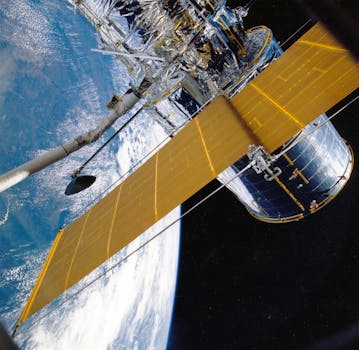The Rise of Mega-Constellations: Latest Updates in Satellite Telecommunications

The Rise of Mega-Constellations: Latest Updates in Satellite Telecommunications
The Rise of Mega-Constellations: Latest Updates in Satellite Telecommunications. The satellite telecommunications industry is undergoing a significant transformation with the emergence of mega-constellations. These vast networks of small satellites in low Earth orbit (LEO) are being launched by companies like SpaceX, OneWeb, and Amazon’s Kuiper Systems to provide global internet connectivity. In this article, we will delve into the latest updates and developments in the field of mega-constellations and explore their impact on the satellite telecommunications industry.
Mega-constellations are designed to provide high-speed, low-latency internet connectivity to remote and underserved areas around the world. They consist of thousands of small satellites, each weighing around 100-200 kg, which are launched into LEO at an altitude of approximately 500-1,200 km. These satellites are equipped with advanced technology, including phased array antennas and high-gain amplifiers, which enable them to provide high-speed data transmission and reception.
Key Players in the Mega-Constellation Market
Several companies are currently involved in the development and launch of mega-constellations. SpaceX, founded by Elon Musk, is one of the pioneers in this field. Its Starlink constellation aims to provide global internet connectivity with a network of up to 42,000 satellites. OneWeb, another major player, plans to launch a constellation of 650 satellites to provide high-speed internet connectivity to underserved areas. Amazon’s Kuiper Systems is also developing a mega-constellation of 3,236 satellites to provide broadband internet services.
Other companies, such as Boeing, Lockheed Martin, and Telesat, are also investing in mega-constellation technology. The European Space Agency (ESA) and the Canadian Space Agency (CSA) are also exploring the development of mega-constellations for various applications, including Earth observation, navigation, and communication.
Challenges and Concerns
Despite the potential benefits of mega-constellations, there are several challenges and concerns associated with their development and deployment. One of the primary concerns is the risk of space debris. With thousands of satellites in LEO, there is a significant risk of collisions and the creation of space debris, which can pose a threat to other satellites and spacecraft in orbit.
Another challenge is the issue of radio frequency interference. Mega-constellations can potentially interfere with other satellite systems and terrestrial networks, causing signal degradation and disruption to communication services. Regulatory bodies, such as the Federal Communications Commission (FCC) in the United States, are working to develop guidelines and regulations to mitigate these risks and ensure the safe and efficient deployment of mega-constellations.
Future Developments and Applications
The development of mega-constellations is not only transforming the satellite telecommunications industry but also enabling a wide range of new applications and services. One of the most significant applications is the provision of broadband internet connectivity to remote and underserved areas. Mega-constellations can also enable the creation of IoT networks, providing connectivity to billions of devices around the world.
In addition, mega-constellations can be used for Earth observation, navigation, and weather forecasting. They can also enable the development of new services, such as satellite-based navigation and timing, and provide critical infrastructure for emergency response and disaster recovery.
In conclusion, the rise of mega-constellations is revolutionizing the satellite telecommunications industry, enabling the provision of global internet connectivity and a wide range of new applications and services. While there are challenges and concerns associated with their development and deployment, the potential benefits of mega-constellations make them an exciting and rapidly evolving field of research and development.






